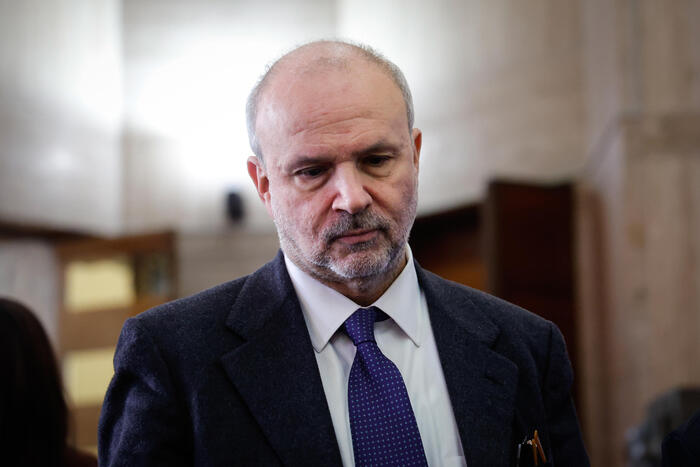Peter Gardosch: Saving a life from oblivion
Created: 11/21/2022 11:28 am
By: Susanne Greiner
Peter Gardosch in front of the memorial "Hain der 30,000" at the Kaufering train station.
© Kronawitter
Landsberg – Actually, the 92-year-old Peter Gardosch would have come to the screening of the documentary about his life “Peter Gardosch – From Auschwitz to Landsberg, from Jerusalem to Berlin” next Friday.
The eyewitness died on November 16th.
His wife Ramona will now take part in the premiere in the Olympia cinema.
Peter Johann Gardosch lost his family in Auschwitz in 1944.
The then 13-year-old was then sent to the Kaufering III subcamp.
The Hungarian Jew survived that too – and is today one of the few eyewitnesses who can still tell of the National Socialist era.
With the support of the city of Landsberg, filmmaker Max Kronawitter has made a documentary about Gardosch's life: "Peter Gardosch - From Auschwitz to Landsberg, from Jerusalem to Berlin".
Its preview will take place on November 25 (3 p.m.) in Landsberg's Olympia Film Theater.
Peter Gardosch owes his life to his grandfather's winter coat.
When the 92-year-old was deported to Auschwitz in the summer of 1944, he wore this coat: "I was skinny, and before I left my grandmother told me to put on the city coat," he said at the eyewitness interview last year in Fürstenfeldbruck.
Lost in his coat, the 13-year-old looks older.
The soldier who decides on the life and death of the deportees on the ramp therefore waves him to the right.
The way to the gas leads to the left – the side to which the soldier sends Gardosch's sister (8), his 39-year-old mother and his grandmother.
Only Gardosch's father survived.
Gardosch made his first experiences with anti-Semitism a year earlier in his homeland, Neustadt (Dunaújváros) in Hungary.
He can only enter the corner shop there through the back door.
Because in the shop the note "We do not serve Jews" was already emblazoned.
Gardosch also remembers the deportation: "70 penned-in passengers had to share a single bucket of water and chamber pot."
He survived the 19 days in Auschwitz before being sent to the Kaufering III subcamp in Dachau.
There he works under the senior construction management of the Todt organization, code name Ringeltaube, which wants to build bunkers for German aircraft production.
The infrastructure for the coming prisoners, mostly Jewish, still has to be built, for which Gardosch's father is supposed to mark out the buildings.
Because Gardosch speaks perfect German, he does not have to help with the construction, but is assigned to the camp command as an assistant.
That also means better food – with which he can not only save his own life, but also his fellow inmates.
The escape.
In April 1945, the Americans were almost at the door, the SS cleared the camp and sent the prisoners on the death march.
And Gardosch is lucky again: "It was pitch dark and we were waiting for the right moment when a truck accident happened and panic broke out." Both use the ensuing chaos to escape.
They found shelter in the Fürstenfeldbruck monastery.
Father Emanuel takes in those who have fled and hides them until the Americans arrive.
There, as Gardosch recalls in a conversation with contemporary witnesses, he ate "the best jacket potato of my life".
Back in his home town of Neustadt, Gardosch catches up on his Abitur and qualifies for a position with the state broadcaster.
He marries, starts his own family, but plans to emigrate: he finds the country's communist transition restrictive.
He actually wants to go to the USA, but in the end he ends up in Israel.
As a non-Jew with an uncircumcised son, his wife does not feel comfortable there.
And when Gardosch, who works as a bellboy at the Hotel “King David”, meets a German businessman, he follows him to Friedrichshafen.
He becomes a successful businessman and remarries: a German woman, to whom he tells his story more than ten years later.
Gardosch now speaks in schools and at commemorative events.
He has visited the Auschwitz Memorial three times.
In August, Gardosch visits the memorial in Dachau and passes on his experience of the Holocaust.
Nobody suspects at this point in time that it will be his last eyewitness interview.
The day is also the last day of shooting of Max Kronawitter's documentary, which captures the life of Gardosch.
The filmmaker accompanied him to the places of his life in Romania, Poland, Israel and Germany for more than a year.
In the 90-minute documentary "From Auschwitz to Landsberg, from Jerusalem to Berlin", the 92-year-old reviews his life.
"His description is a bridge, a clear commitment to a new Germany that has become his home," says Kronawitter.
His wife Ramona will come to the film screening, possibly also his son Peter:
The documentary will be shown on November 25 at 3 p.m. in the Olympia cinema.







